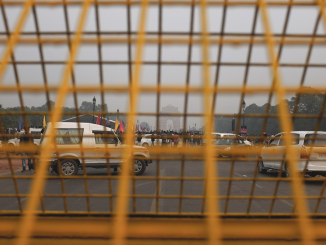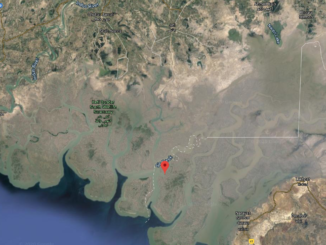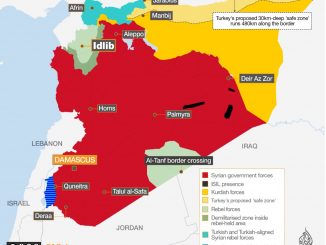
It’s the year 2021, with punishing soviet winters hitting minus 60C in mainland Russia, as Alexei Navalny, the sole face of Russian activism against government’s corruption, boards a plane from Germany to Moscow, despite the warnings of a possible arrest or even an assassination attempt (several of whom he has survived in the past). He was of course arrested at the airport as soon he arrived at Moscow, but what no one saw coming was the fierce protests and rioting which followed shortly afterwards across the state. In Moscow alone around 1600 arrests were made including Navalny’s wife’s who was released soon afterwards, the protests now heated up have spread to more than 80 cities of Russia. Most of the chanting being done in these protests translates to “Set him Free”, “Russia without Putin” and “Give back our money!”.
The question thus remains; how can one man, in a state as oppressive towards political opposition as Russia, mobilize such huge numbers of people in such a short span of time with such a unified purpose? Perhaps the answer lies in the number of views on a YouTube video titled “Putin’s palace. History of world’s largest bribe”. The video exposes Putin’s blatant abuse of executive power for corruption and creating private property, Navalny has previously been vocal and exposed via YouTube videos, issues as sensitive as misuse of security sector against civilians including himself by Kremlin. The fact here is that the video is in Russian Language and has around 94 million views with majority of comments made in Russian language as well, the number of these views account for roughly 1/3 of Russia’s population. The Russian youth in particular seem to have step up in Navalny’s support, having seen this as an opportunity to vocalize their concerns on a stagnant job market and an overall oppressive regime. It seems a genius political move by Navalny therefore, to put his very life in line and deciding to come back, pushing Putin beyond stalemate and into political confrontation. He has become in a few days of his arrest on 17 January 2021, the face of Russian opposition, the voice for public urge towards regime change, that has been quietly simmering in the outskirts of Moscow for long.
In retrospect, during year 2020, according to Corruption Perception Index (CPI), out of 180 countries, Russia held a notorious ranking at 129. Previously during the first decade of Putin’s rule in the early 2000s, there were labour strikes and protests to which his first presidential term catered. The protests in the start of second decade became more politicized; anti-corruption and authoritarianism being their main agenda. Russian citizens and specially the millennial generation or the ‘Putin Generation’ as the filmmaker Irene Langemann has called them, comprising of those born around 1999, near Putin’s first election as Prime minister, have started to come together, to dissipate the message of freedom and liberty and rising against non- democratic and corruption laden political system for a political alternative, based on progress and freedom to live in a more open and diverse Russia.
Previously anti-corruption and anti-regime mass protest against Putin’s regime were criminalized by passing laws in 2012, which had made organizing a protest increasingly difficult passing through administrative barriers and if not permitted were made punishable via detention of up to 5 years. The World Press Freedom Index has placed Russia at 149/180. Internet freedoms have also been restricted in the past to cause fear and discouraging any anti-regime mobilization. During protests in 2018 Putin’s regime has blocked the 3G and 4G network for a certain period of time in cities.
The disappointment and outrage of the ‘Putin Generation’ of Russia thus do not seem on baseless grounds. Economic Freedom Index 2020 has ranked Russia 94/180 which places Russia as ‘moderately free’ after being decades of remaining un-free economy in the world. Russia has also faced sanctions by the west and European Union after illegally annexing Crimea in 2014. Russia’s downward spiral may be accredited to loss of prices of oil and gas, cost of war and sanctions eating up its GDP and a heavy strain on public expenditure. Russia has historically been a repressed as an autocratic society. Reports published by Institute of Modern Russia (IMR) analyze the Putin’s era spanning over more than 2 decades now from 1999-2020 shows that ‘authoritarianism’ has become synonymous with ‘Putin’s presidency’. Putin’s regime approves the laws for its extension and consolidation of power. Out of the fear of foreign agents and threats to Russian State and Society, the Putin’s regime also has mounting control and regulating the civil society and Not for Profit Organizations. The organizations which promote the themes of strong state and nationalism are given relaxation in operation while the human rights advocacy groups are dealt with strict regulations.

So far pro Navalny protests have resulted in around 10,000 people been detained by the police. Also, Russian foreign ministry on 5th Feb 2021 announced expulsion of Swedish, Polish and German Diplomats on accounts of supporting what were called ‘unlawful’ anti-government protests. The governments use of force against protestors has been termed as “the biggest wave of political terror in our country since Stalin’s times” by Leonid Volkov, Mr Navalny’s key adviser who lives in self-imposed exile. Apps like LinkedIn and Zello have been blocked. In desperate attempts to contain the street the regime has also asked Google and Youtube to remove the content related to protests and uprising against the government. The protests’ impact may not reap some solid political victory anytime soon, but they are deemed to put a dent on regime control in the future.




Be the first to comment